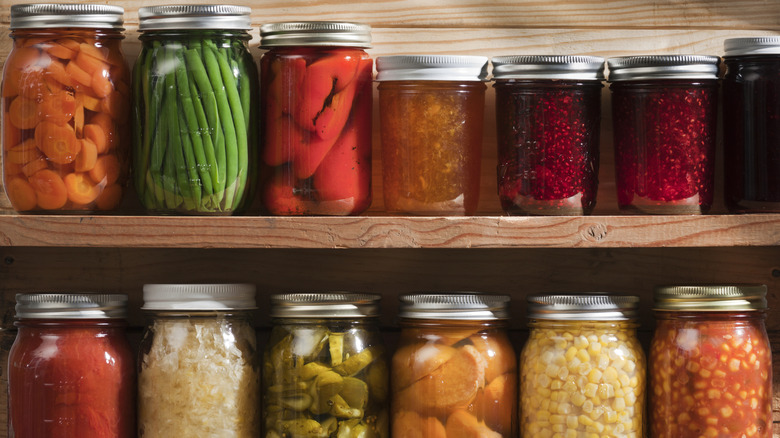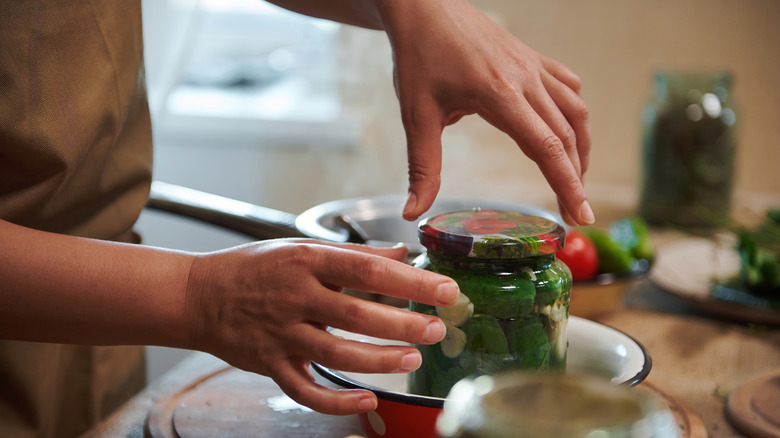Is Rust On Canning Jar Lids Dangerous? Here's What To Do When You See It
We may receive a commission on purchases made from links.
If you've been home canning for a while, you know how satisfying it is to see rows of colorful jars lined up in your pantry. There are also many smart ways to use old jars to declutter and organize your kitchen. But sometimes, things don't go perfectly. One of the more common (and slightly nerve-wracking) issues you might run into is rust on your jar lids. The good news? Not all rust spells disaster. It really depends on where and how bad it is.
So, why does rust even happen? Usually, it forms when your lids are exposed to too much moisture. This can occur during the processing stage if your storage area is too humid or simply over time as lids age. The protective coating on canning lids can wear down, and once the metal underneath gets exposed, rust starts to form. But here's the big question: Is your food still safe, or do you have to throw the whole jar away? The short answer is: It depends.
If the rust is on the outer rim or the surface of the lid — basically, the part that doesn't come in contact with the food — you're probably fine. The jar's seal is likely still intact. However, if rust has crept onto the inner part, where the lid actually seals against the jar, things get trickier. A compromised seal could mean bacteria could sneak in, or rust particles might get into your food. If that's the case, it's better to be safe than sorry and toss it or upcycle the glass jar for bathroom storage. Nobody wants to mess around with potential foodborne illnesses.
What to do when you see rust on canning jar lids
First off, always inspect your jars and lids before you even start the canning process. If you see rust on a lid before you use it, don't risk it. Swap it out for a new one and reuse the jars for other areas of the house. It's not worth jeopardizing an entire batch of your favorite homemade jam or pickles over a rusty lid. But what if you find rust on a jar that's already been sealed and stored? Take a deep breath and give it a closer look. If the rust is only on the outside and the lid feels sturdy, your food is likely still safe. Just wipe the lid clean. Now, if you're dealing with significant rust or rust that's anywhere near the sealing surface, it's time to let that jar go.
To prevent rust from ruining your future canning lids, make sure to store your jars in a cool, dry spot. Also, a pro tip: Once your jars have been processed and cooled, remove the screw bands before storing them. Leaving the bands on can trap moisture between the lid and the jar, increasing the risk of rust. Some experienced canners even apply a light coating of Kate Naturals Food-Safe Mineral Oil to the lids as an extra layer of protection. If you're a serious home canner, investing in good-quality, rust-resistant lids like the EcoPeaceful's Surgical Stainless Steel Mason Jar Lids can also save you a ton of hassle in the long run. It's one of those small upgrades that makes a big difference.

